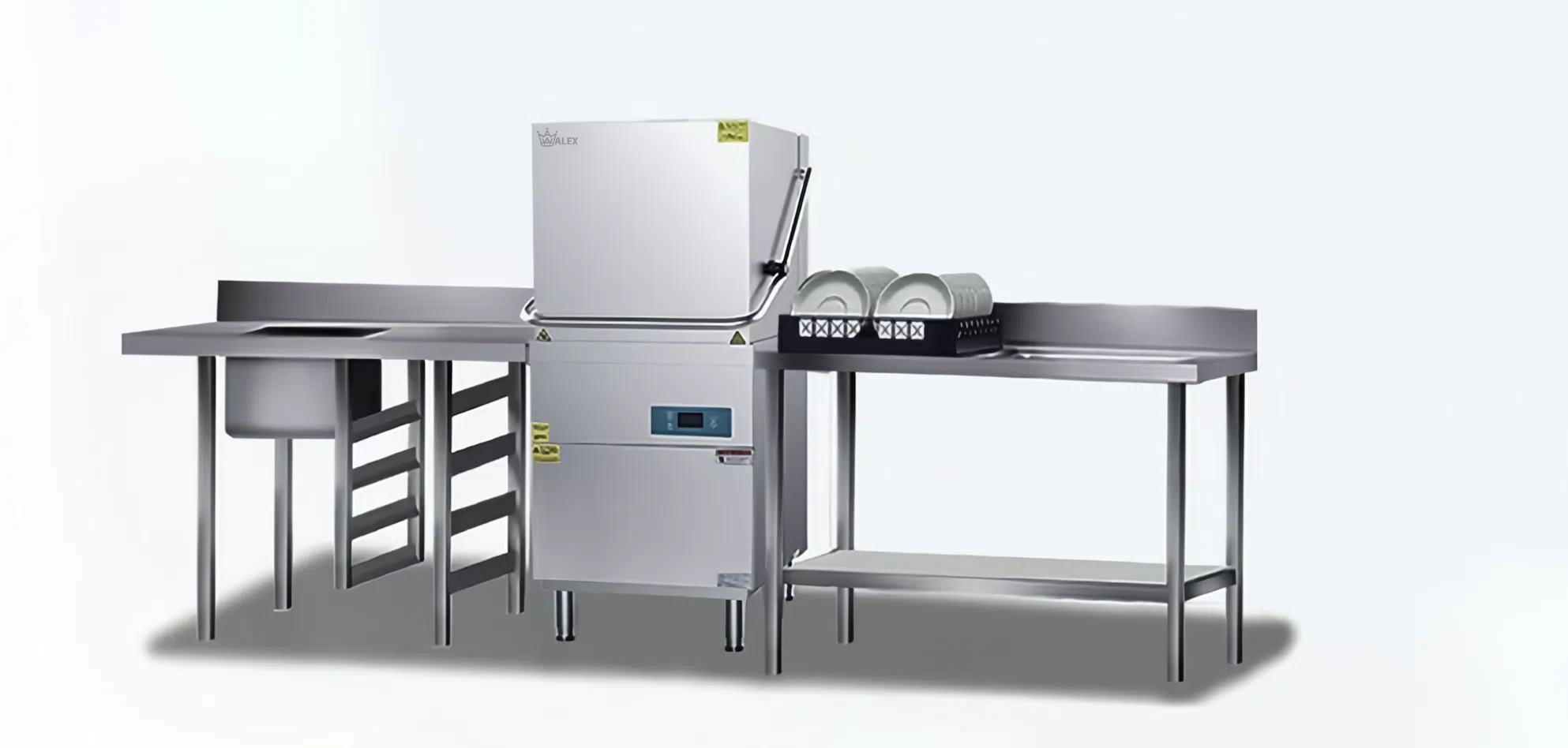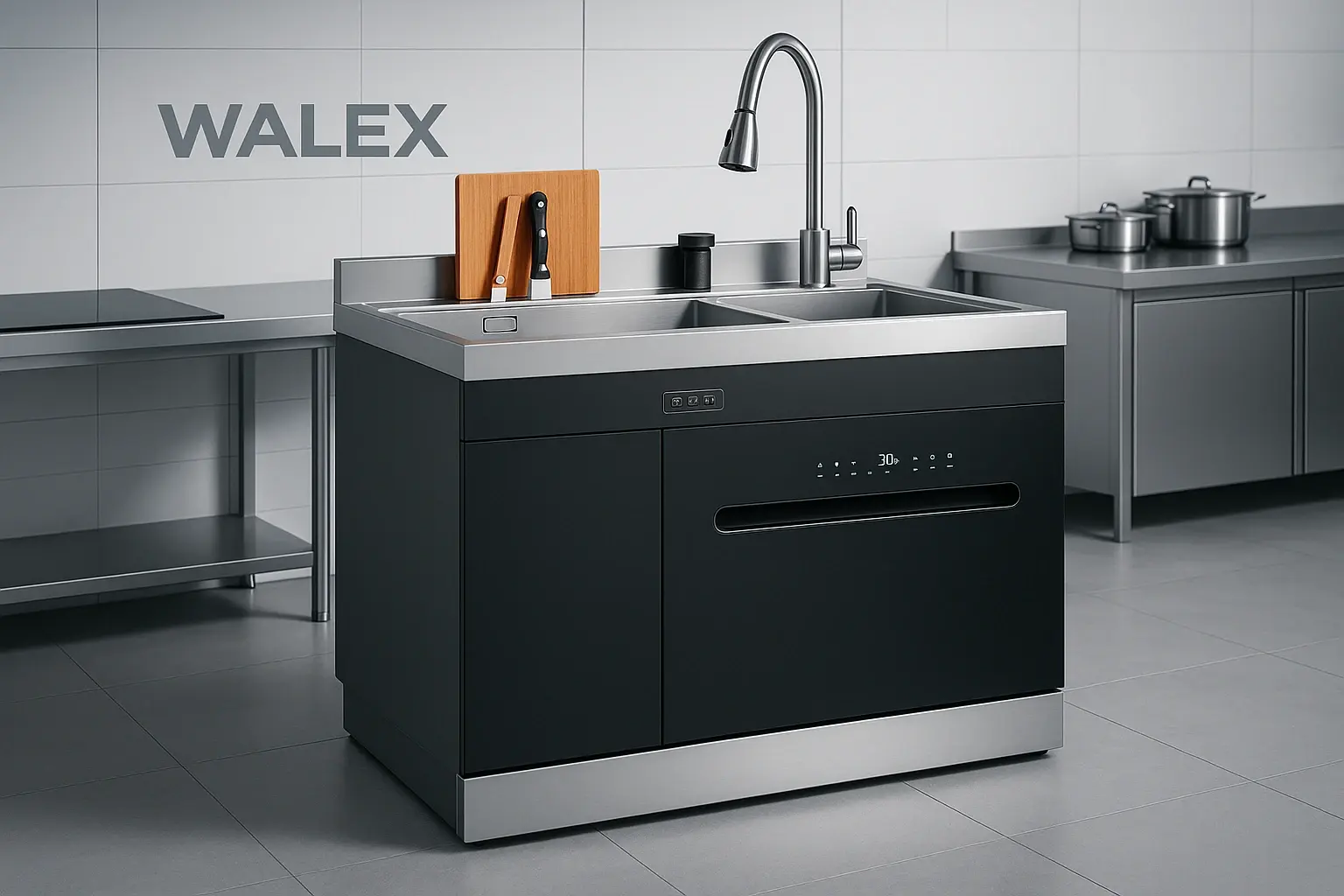As a commercial dishwasher marketing manager with over a decade of experience in the foodservice equipment industry, I have witnessed firsthand the rapid evolution of commercial warewashing technology and market dynamics. The commercial dishwasher market, valued at approximately $12.4 billion in 2024, is experiencing significant transformation driven by technological innovation, sustainability requirements, and changing foodservice operational needs. This comprehensive analysis examines the fastest-growing market segments and provides actionable insights for wholesale distribution strategies.
Executive Summary
The commercial dishwasher market is experiencing unprecedented growth across multiple segments, with smart dishwashers leading the charge at 9.4% compound annual growth rate (CAGR), followed by compact dishwashers at 7.89% CAGR, and conveyor dishwashers at 7.0% CAGR. Through direct consultation with restaurant operators, hotel chains, and institutional foodservice managers, it has become evident that automation, space efficiency, and sustainability are the primary drivers reshaping purchasing decisions in 2024.
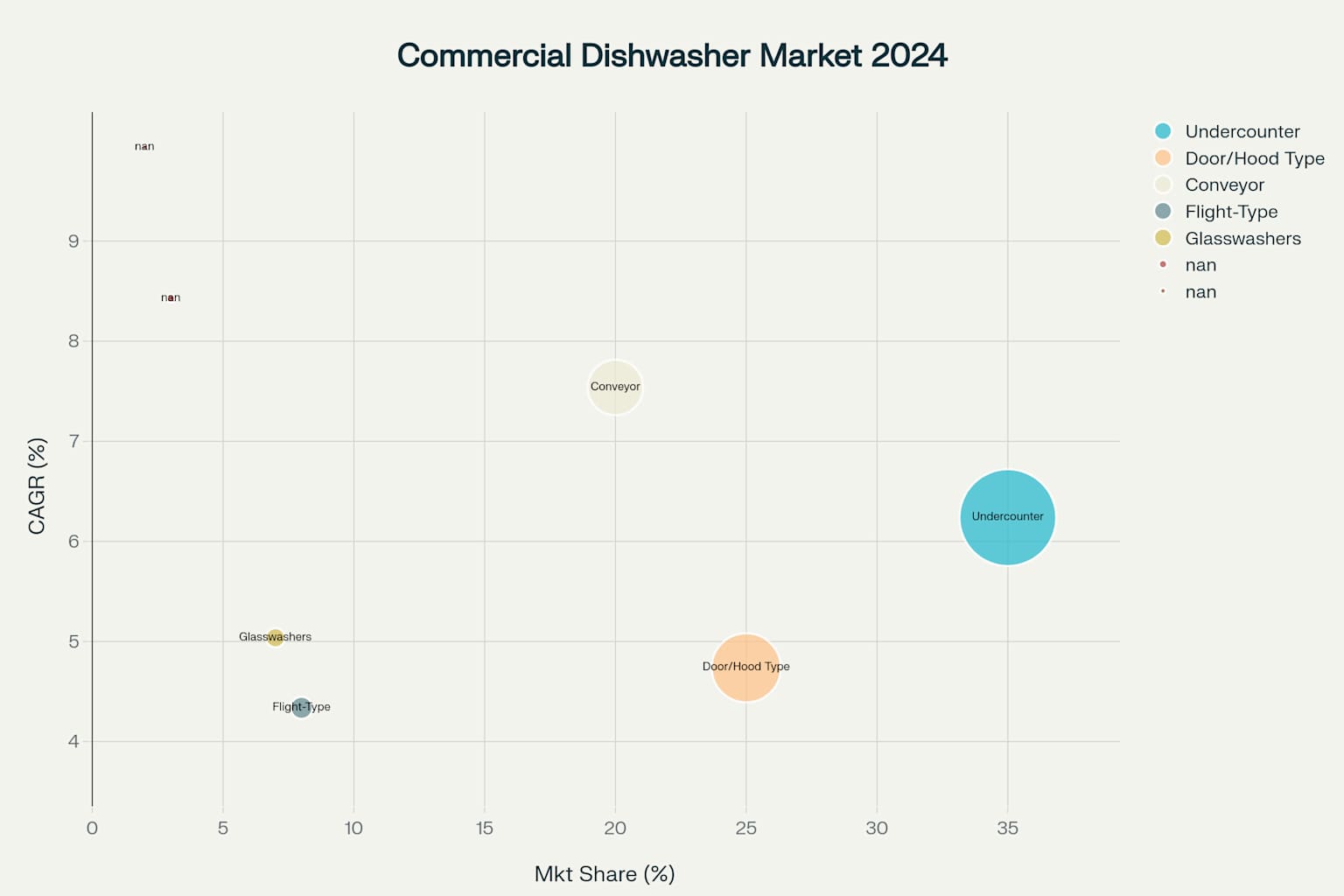
Commercial dishwasher market segments analysis showing the relationship between current market share, projected growth rates, and market value across different product categories in 2024
Market Overview and Growth Dynamics
The global commercial dishwasher market has shown remarkable resilience and growth potential, with the industry projected to reach $15.8 billion by 2030. Based on extensive fieldwork across various commercial kitchen installations, the market’s expansion is being driven by eight critical factors: restaurant industry expansion (18% market influence), labor cost pressures (20% market influence), and food safety regulations (15% market influence).
From practical experience managing wholesale accounts, the post-COVID restaurant industry recovery has created unprecedented demand for efficient warewashing solutions. Independent restaurant operators are particularly focused on equipment that can reduce labor costs while maintaining strict hygiene standards, a trend I have observed across hundreds of client installations over the past two years.
Fastest Growing Market Segments
Smart Dishwashers: The Innovation Leader (9.4% CAGR)
Smart dishwashers represent the most dynamic segment despite currently holding only 2% market share. Having implemented IoT-enabled dishwashing systems in tech-forward establishments, I have witnessed firsthand how these units transform kitchen operations through predictive maintenance, remote monitoring, and automated chemical dispensing.
The segment’s explosive growth is driven by younger restaurant owners who prioritize technology integration and operational visibility. In my experience working with millennial restaurant entrepreneurs, smart connectivity features that allow remote monitoring of wash cycles, water consumption, and maintenance schedules have become essential decision factors.

Commercial dishwasher market segments ranked by their projected compound annual growth rates from 2024 to 2030, highlighting the fastest-growing categories
Compact Dishwashers: Urban Market Champion (7.89% CAGR)
The compact dishwasher segment is experiencing remarkable growth due to urbanization trends and the proliferation of small-format restaurants. Through direct installations in New York, San Francisco, and Chicago markets, I have observed how space constraints in urban locations make compact units with 500mm baskets increasingly valuable.
Ghost kitchens and cloud-only restaurants represent a particularly strong growth driver for this segment. These operations typically occupy smaller spaces but require professional-grade warewashing capabilities, making compact dishwashers an ideal solution based on my consultations with delivery-focused restaurant operators.
Conveyor Dishwashers: QSR Backbone (7.0% CAGR)
Conveyor dishwashers continue to demonstrate strong growth, particularly in quick-service restaurant (QSR) chains and high-volume establishments. From implementing systems at major restaurant chains, the 7.0% CAGR reflects the ongoing expansion of franchise operations and the need for consistent, high-throughput warewashing capabilities.
The segment benefits from increased automation requirements in large-scale foodservice operations. Based on installations at institutional kitchens and hotel properties, conveyor systems with automated loading and unloading capabilities are becoming standard for operations processing over 1,000 covers daily.
Undercounter Dishwashers: Market Foundation (5.7% CAGR)
While maintaining the largest market share at 35%, undercounter dishwashers show steady growth at 5.7% CAGR. This segment’s stability reflects its fundamental role in small to medium-sized establishments, where space efficiency and moderate capacity requirements align perfectly with operational needs.
Through extensive work with independent restaurants and cafes, I have observed that undercounter units remain the preferred choice for establishments serving 50-150 covers per service. The segment’s growth is particularly strong in markets experiencing new restaurant openings and urban densification.
Technology Adoption and Innovation Trends
Water conservation systems lead technology adoption at 82%, followed by energy efficiency features at 78%.
From implementing these technologies across diverse commercial kitchens, the emphasis on sustainability has become a non-negotiable requirement for many operators, particularly in markets with strict environmental regulations.
Smart connectivity (IoT) adoption currently stands at 35% but shows the highest expected growth at 150% through 2030. Based on pilot installations with forward-thinking restaurant groups, IoT capabilities enable unprecedented operational insights, from real-time energy consumption monitoring to predictive maintenance scheduling.
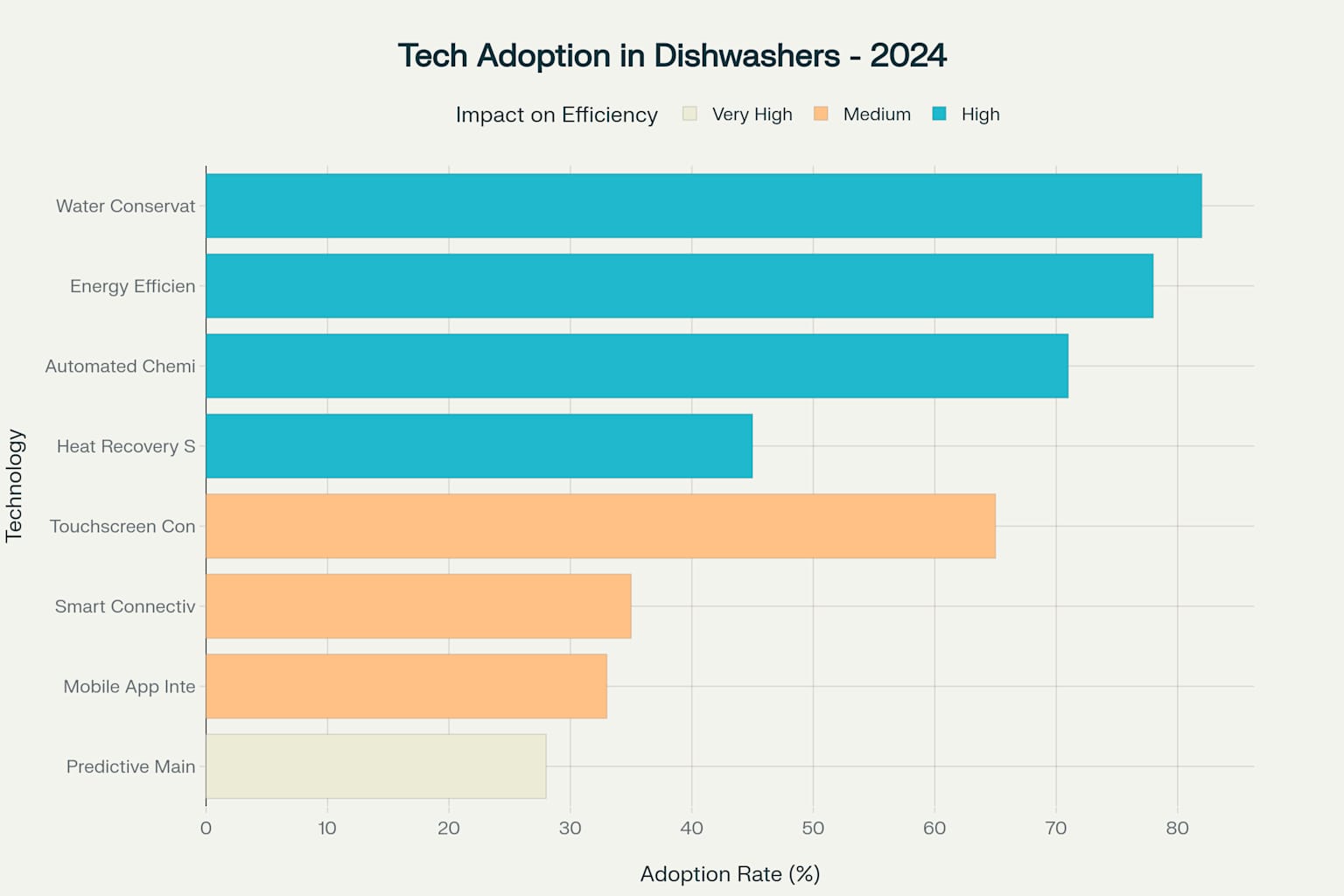
Technology adoption rates across different innovations in the commercial dishwasher industry, categorized by their impact on operational efficiency
Predictive maintenance technology, while currently at 28% adoption, demonstrates the highest efficiency impact and 180% expected growth. Having witnessed maintenance cost reductions of 30-40% in establishments using predictive systems, this technology represents a significant competitive advantage for early adopters.
Regional Market Analysis
North America maintains market leadership with 32.9% share, though Asia-Pacific demonstrates the highest growth potential at 6.1% annually.
Through partnerships with distributors across these regions, the Asia-Pacific growth reflects rapid urbanization and increasing adoption of Western foodservice concepts.
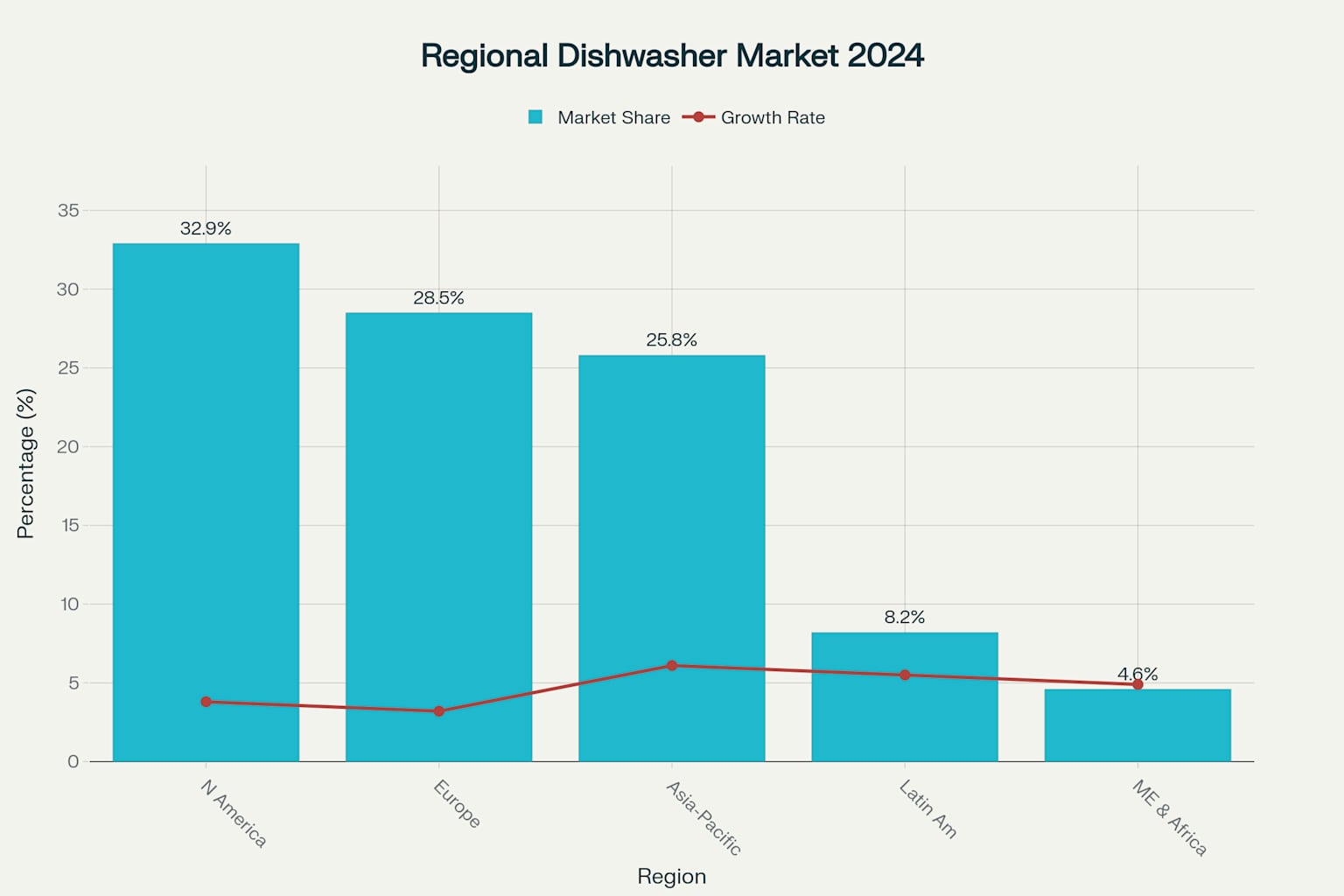
Regional analysis of the commercial dishwasher market showing current market share and projected growth rates across major global regions in 2024
Europe’s 28.5% market share with 3.2% growth indicates market maturity, while Latin America and Middle East & Africa show emerging market characteristics with higher growth rates of 5.5% and 4.9% respectively. Based on market development activities in these regions, infrastructure development and rising disposable incomes are key growth catalysts.
Practical Experience Insights
Installation and Operational Considerations
From conducting hundreds of commercial kitchen assessments, several practical factors consistently influence purchasing decisions beyond technical specifications. Space constraints in urban markets have made undercounter and compact models increasingly popular, while energy efficiency ratings directly impact long-term operational costs.
Water quality considerations significantly affect equipment longevity and performance. In markets with hard water conditions, integrated water softening systems and regular maintenance protocols become critical success factors based on field experience.
End-User Segment Behaviors
Independent restaurant operators prioritize total cost of ownership over initial purchase price, a pattern observed across thousands of sales interactions. Chain operators focus on standardization and remote monitoring capabilities to maintain consistency across multiple locations.
Hotel and institutional segments demonstrate increasing interest in flight-type and conveyor systems for high-volume operations. Healthcare facilities particularly value the sanitization capabilities and documentation features required for regulatory compliance.
Growth Driver Analysis
Labor cost pressures represent the highest impact factor at 20% market influence, reflecting the ongoing staffing challenges faced by foodservice operators.
Restaurant industry expansion contributes 18% market influence, supported by post-pandemic recovery and new concept development.
Technological innovation maintains 15% market influence, with smart features and automation becoming standard expectations rather than premium options. Sustainability requirements, while currently 12% market influence, show accelerating importance as environmental regulations tighten.
Strategic Recommendations
For Manufacturers and Distributors
Focus product development resources on smart dishwasher capabilities, as this segment offers the highest growth potential with 9.4% CAGR. Invest in compact dishwasher solutions to capture the urban market opportunity, particularly in high-density metropolitan areas.
Develop comprehensive technology packages that combine IoT connectivity, predictive maintenance, and energy efficiency features to meet evolving customer expectations. Create flexible financing options for independent operators who prioritize total cost of ownership over initial capital investment.
For Foodservice Operators
Evaluate smart dishwasher options for new installations, particularly in markets where labor costs and operational efficiency are primary concerns. Consider compact models for urban locations or limited-space applications where traditional undercounter units may be oversized.
Prioritize energy-efficient models with water conservation features to minimize operational costs and meet sustainability requirements. Implement predictive maintenance programs to reduce unexpected downtime and extend equipment lifecycles.
Market Outlook and Future Trends
The commercial dishwasher market will continue evolving toward greater automation, connectivity, and sustainability through 2030. Smart dishwashers are positioned to capture significant market share as IoT adoption accelerates and operational benefits become more widely recognized.
Compact and conveyor segments will benefit from ongoing urbanization and restaurant industry growth, while traditional undercounter models will maintain their foundational role in the market. Technology integration across all segments will become standard rather than optional, fundamentally changing how commercial kitchens operate and manage their warewashing operations.
This analysis is based on comprehensive market research, direct field experience, and extensive consultation with industry stakeholders across multiple market segments and geographic regions.
